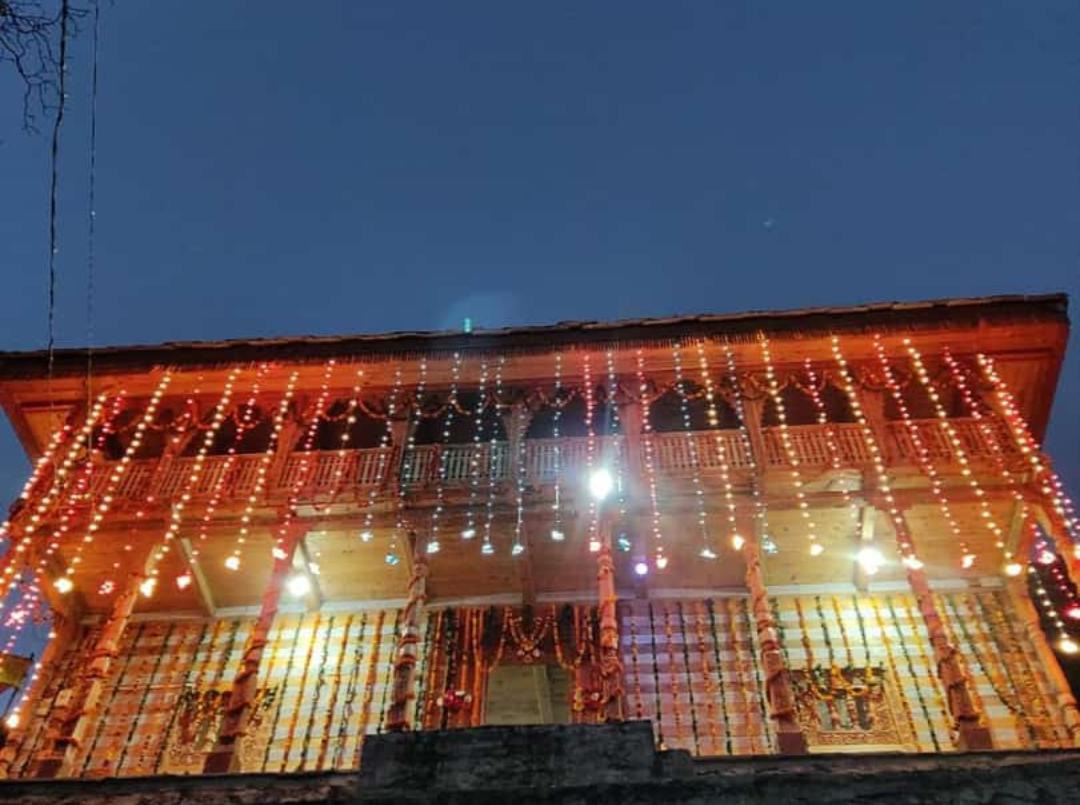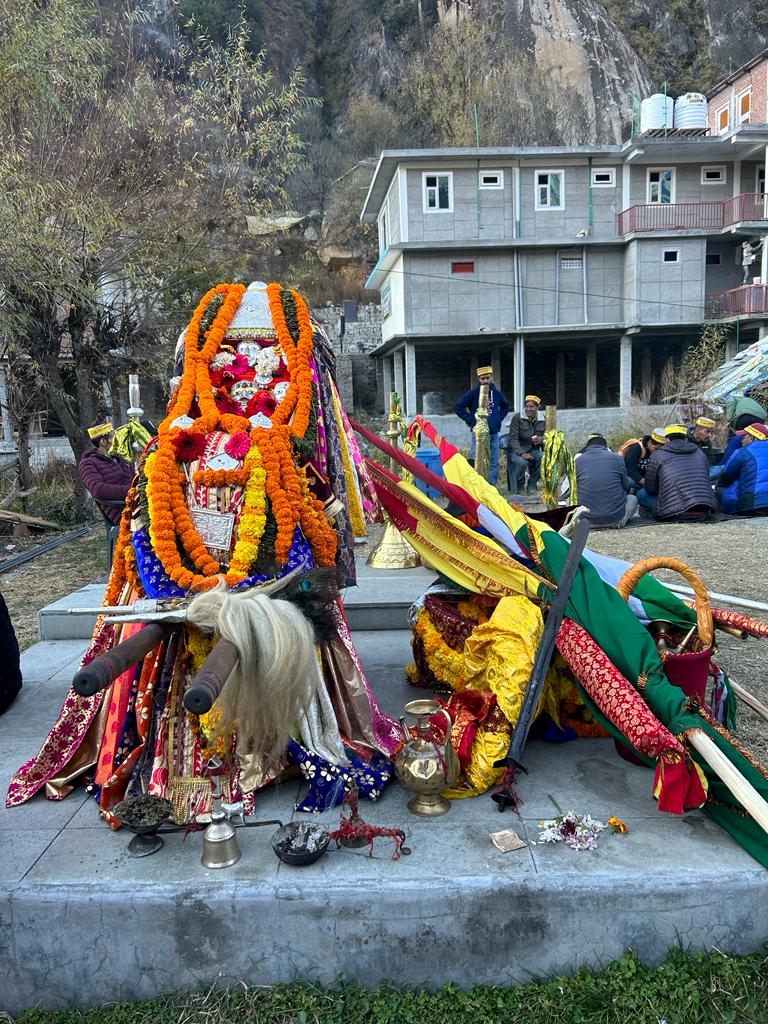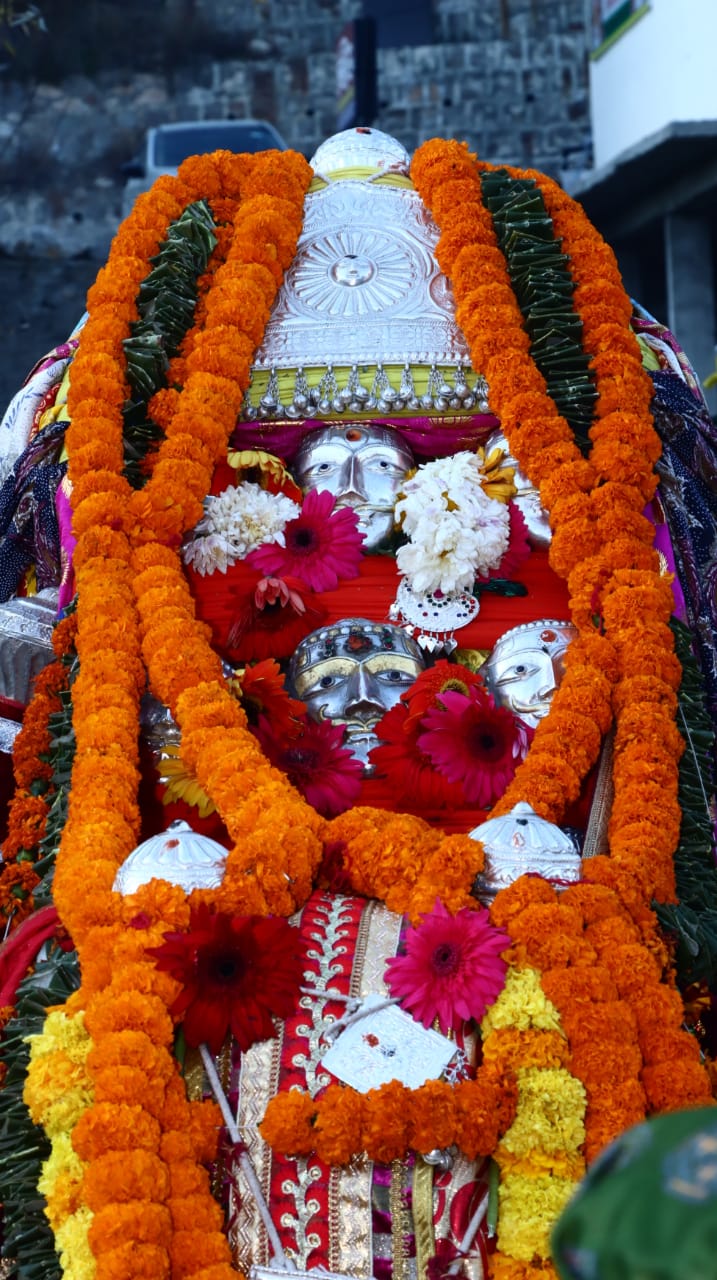Ahead of LS polls, 70343 licensed firearms deposited in Himachal Pradesh
Revealing this, a spokesperson of the Himachal Pradesh Election Department here on Tuesday, said: “Besides, these 3278 weapons have been impounded or cancelled.”
The local residents from 5 villages raised a hefty Rs 1 crore fund within a short spell of time to give an ancient temple a fresh lease of life.

[Photo:SNS]
Kullu Valley, the name of a paradise, left on this planet, has grabbed media headlines. The abode of many gods and goddesses in Himachal Pradesh is now no less proud of the people living in the beautiful hamlets in the entire valley.
The local residents from 5 villages raised a hefty Rs 1 crore fund within a short spell of time to give an ancient temple a fresh lease of life. They believed that the local gods aeons-old deities would get the 150 year old Jamdagni Rishi temple afresh to live in.
Hemraj Thakur, a member of the temple committee, explained said these deities, who are mostly considered part of the Rishi Jamdagni, are closely linked to the well – being of the village and its people.
Advertisement

He said, “We communicate with our gods through Guru, locally known as gur. The God’s response to our problems may appear strange.”
According to the villagers, it is the culture of the Kullu Valley that before any ceremony (Pratishtha), one has to take a regal bath at the Rishi Vasishit Kund.
Rishi Vashisit is one of the Rishis, who is considered to be the guru of the Lord Ram. Rishi Vasishit, was certainly considered the superior of all the gods in the valley. And it is mandatory for all the deities to take a royal bath before any new ceremony.

The temple, the villagers believe, was least 150 years old and that it was destroyed completely. The villagers started collecting donations to renovate the temple. It took them 6 months time to raise a fund of Rs 1 crore. The temple was renovated indeed and to be followed by a ceremony to mark the fresh beginning.
Each of the families decided to donate Rs 20,000 for the purpose. Those, who could not donate the amount came forward to be engaged in the construction activities.
Temple in Kath Kuni Style
The original form of the temple was in Kath-Kuni style. The same ancient architectural style is being maintained in the renovated one. Kath-Kuni is an ancient construction method found in the lonely highlands of northern India, particularly in Himachal Pradesh.
A comparable building type is known as “Koti Bana” in Uttarakhand. It is a traditional technique in which alternating layers of long, thick wooden logs and stone masonry are kept in place without the use of cement.
The approach was developed keeping in mind the seismic activites, geography, environment, climate, indigenous materials, and cultural landscape in mind.
This ancient technology is used to construct the majority of the region’s oldest temples. This distinctive building method has resulted in the development of a vernacular architectural prototype known as Kath-Kuni architecture.

Rishi Jamadagni’s connection with Kullu Valley.
It is popularly believed that Jamadagni, the rishi, was looking for a serene location to meditate when the Lord Shiva told him to go to the Kullu Valley. He was carrying the images of 18 gods as he arrived in the Kullu Valley.
A strong whirlwind dispersed the gods in the valley which turned each of the statues into the local deities. Since then, it has been believed that the Rishi Jamdagni has a hold on these 18 villages, locally called Dev Garh. Twelve of the 18 are located in the upper Kullu valley. Among all Jamlu devta in Malana village is especially well-known.
Advertisement